#rotary hybrid
Explore tagged Tumblr posts
Text
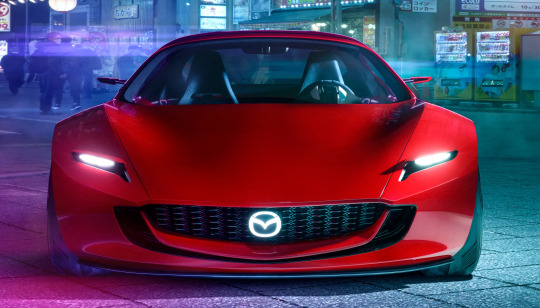




Mazda Iconic SP Concept, 2023. First shown at the Japan Mobility Show, Mazda's design chief, Masashi Nakayama, has confirmed that concept will reach series production “in the not-so-distant future.” The Iconic SP is fitted with a twin-rotor hybrid drivetrain but there has been no confirmation of what will power the production version
#Mazda#Mazda Iconic SP#concept#prototype#design study#Mazda Rotary#Rotary Hybrid#2023#sports car#twin rotor#Masashi Nakayama
327 notes
·
View notes
Text

Rotary Concept SilhouetteHistory Single
Single silhouette of Mazda Iconic SP Concept.
Home | Index | Posters | Special Tees | Facebook | Instagram
#silhouettehistory#mazda#iconic sp#mazda iconic sp#mazda iconic sp concept#concept car#sports car#hybrid car#rotary#wankel#japanese cars#single silhouette#car#silhouette#history
2 notes
·
View notes
Text
This is beautiful and would make me pay my online bills on time.
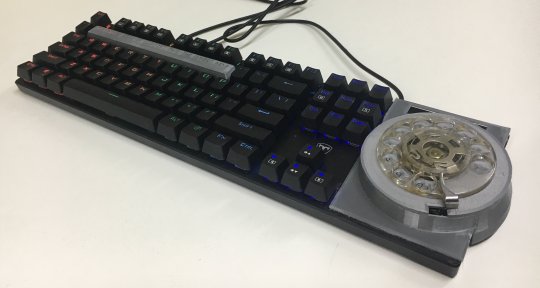
rotary numpad on a mechanical keyboard
32K notes
·
View notes
Text
bi component pedal plate mold
China 2k mold maker, offer double material swivel pedal mold, multi injection replacement pedals, bicolors hybrid pedal mold, bi component pedal plate mold
#two color swivel pedal mold#2k replacement pedals mold#rotary mold hybrid pedal#double pedal plate mold#china mold#2 component mold#bi material mold#multi shot mold
0 notes
Text
How Do F1 Cars Work?: Braking, Cooling, Sensors
I never know how to start these posts. Let's dive in.
Braking and Cooling
Brakes are an incredibly important part of any car, but most especially in F1. With the speed and power the cars have a sensitive, sturdy, and strong braking system must exist. In the case of modern cars, F1 uses an extremely efficient and durable carbon-carbon disc brake system. This allows the car to screech to a halt in a split-second, and allows drivers to use their speedy reaction times to the best of their ability. When the driver steps on the brake pedal, it compresses two master brake cylinders, one for the front wheels and one for the rear, which generate fluid pressure.
For the front tires, the fluid pressure is delivered directly to the front brake calipers (part that houses brake pads and pistons). Inside each caliper, six pistons clamp pads against the disc and it is this friction that slows the car down. For the rear tires it is a bit different.
At the rear, the car can brake by three separate sources: friction from the brakes, resistance from the spinning engine (engine braking) and electrical braking that results from harvesting energy from the MGU-K . Although the driver can adjust each of these on his steering wheel, when he presses the brake pedal, the three systems work together via the Brake By Wire (BBW) system.
When the driver presses the pedal, the fluid pressure generated in the rear braking circuit is picked up by an electronic pressure sensor. The signal from this sensor represents the overall rear braking demand from the driver and is passed to the Electronic Control Unit (ECU) where it is turned into a series of commands to brake the rear of the car. The ECU distributes its efforts to the three systems according to the the set up of the car and this is altered by the way that the driver has adjusted the switch settings on the steering wheel. This is what teams mean when they say changing the setting on the car.
Going hand-in-hand with braking, cooling is another important part of the car, especially for brakes. Basically, there is a series of systems that cools the power unit, brakes, and electronics. If the car overheats, it can lead to damage and lack of performance. There are a few ways to cool. Radiators cool the engine and hybrid system. Intercooler cools the air that the turbocharger compresses before it enters the engine. Brake cooling ducts bring air to the brakes in order to stop them from overheating.
2. Electronics and Sensors
So i'm sure many of you have looked at the steering wheel and been baffled that this thing that looks like a Nintendo Switch steers that car. The F1 steering wheel is incredibly complex and has a variety of buttons, screens, and knobs. For example, on the steering wheel is an area for strat settings, where their plans for all eventualities are mapped out. There is also a rotary knob for MGU-K settings, where drivers can switch around when faced with possible failures. The menu allows drivers control over every setting in the car. Beyond that there is the pit lane speed button, gear change buttons, race start button, energy recovery button, and brake balance knob, among others. It really tells you how much drivers do in a race beyond racing.

Other than the steering wheel, there is also the telemetry, over 300 sensors which gathers race data and sends it back to engineers on the pit wall. This way, engineers can either remotely alter settings and strat, or advise the driver on what to do. F1 uses a customized mesh wireless network system based on WiMax 802.16 at each racetrack. The sensors record data, which is then temporarily stored in the Electronic Control Unit (ECU), which controls functions like engine performance and power steering. That sensor data then travels wirelessly to a centralized location managed by F1. F1 then sends the data to the relevant team, of course very securely. Teams then use a system called Advanced Telemetry Linked Acquisition System (ATLAS) to view and analyze sensor data.
The final pretty important electronic devices on an F1 car is the many many cameras. The most recognizable camera is found in the "T" structure that sits atop of every F1 car. It gives viewers that top-down, forward facing view used often by broadcasters. this is also how viewers often distinguish between cars of the same team. One driver will have a yellow camera, the other has black. The two nose cameras provides a view of the front wing and low circuit. The 360 camera is on top of the chassis and provides a wide view of the race track, and everything else around the car. The driver facing camera is pointed directly at the driver and helps keep track of how they are doing, and in the event of the crash helps marshals and rescuers figure out the best way to help. The two rear cameras are settled on a rear facing structure, and allows the pit wall to see what is going on directly behind the driver and advise. Beyond these ones, drivers also have cameras inside their helmets, showing exactly what they see. Can't get away with much in an F1 car.
3. How They Work Together
So, we now know the basics of most parts of the car. But these parts all must work together before that car will go anywhere. How do they do it?
One of the more obvious relationships is between aerodynamics and power. The better the aerodynamics, the more usable the power is. They also work in tandem around different parts of the track. On corners the aerodynamics keep the car stable while the power peters off. On straights the power keeps the car boosted. Suspension and tires are also very connected. It is the suspension that keeps the tires on the ground. A good suspension will also mean that the tires are easier to manage, something any driver knows is highly important. Brakes and ERS are also connected because the brakes help recover ERS, pretty simply. Also the cooling system works with most of teh car, cooling engine, tires, and brakes. The biggest connection is probably between all the sensors on the car. They are connected to every single part, and even a small bit of damage can destroy them. The non-sensor components have to accommodate for the sensors and work perfectly with them in order for proper data to be sent back.
The ultimate goal of engineers is to create a car that works in harmony all together. The integration of the engine to the chassis is highly important. There have been cars that the parts were fantastic on their own, but the minute they were put together stopped working completely. Its why teams that produce their own engines have such a leg up over non-manufacturers. Its also why sometimes you will see a car that is running poorly until one small thing is changed, and then suddenly its brand new. Car harmony really is terribly important.
Alright, done! While I covered most of the important stuff, as always if there is any particular part of the car anyone wants me to dive deeper into, please let me know.
Cheers,
-B
31 notes
·
View notes
Text

I hate these weird hybrids between button and rotary but. Cow phone.
3 notes
·
View notes
Text
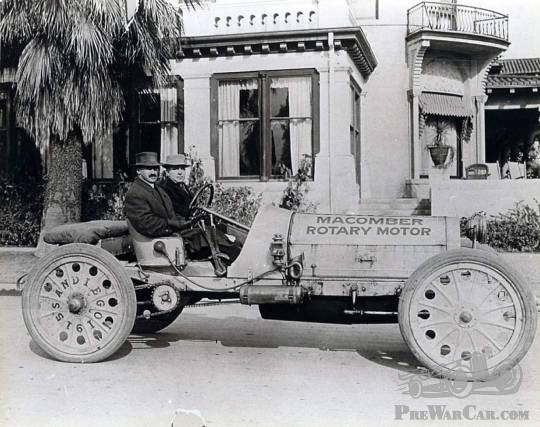
Outside the box: the rotary motor of Walter Macomber
When there’s talk about rotary engines these days, it's usually about Wankel engines, which were designed by Felix Wankel and have been seen in production cars from 1964 onwards. As a matter of fact, keen Wankel engine proponents Mazda Motors (the only manufacturer still using them?) announced a rotary-engined hybrid electric car earlier this year. However, the rotary engine mentioned on the side of the big car seen here is of a very different kind. Walter Macomber and his Macomber Rotary Engine Company in Los Angeles created an axial engine as early as in 1909. This was an air-cooled engine with seven cylinders, built on an axial scheme with a single rotating cylinder block. Yes, the block with all its seven cylinders was rotating...
Read more at PreWarCar: https://www.prewarcar.com/outside-the-box-the-rotary-motor-of-walter-macomber
4 notes
·
View notes
Text
The new Mazda CX-60 SUV is here
The Mazda CX-60 brings a breath of fresh air to the world of medium-sized SUVs, and the Alfa Rent a Car Cluj Napoca Airport rental office believes that it represents a bold incursion of the famous Japanese manufacturer into the world of plug-in hybrid cars.
Launched in 2022, the CX-60 is Mazda's pioneer for the development of an innovative front-wheel drive and all-wheel-drive platform with a longitudinal engine, a novelty that brings to the fore a range of six-cylinder in-line engines and the option of plug-in electrification. Mazda, known for its historic convertible and nonconformity in the automotive world, now surprises with the CX-60, a powerful and elegant hybrid SUV, far from its sports cars with rotary engines:
https://alfarentacar.ro/en/b-mazda-launched-the-new-cx-60-suv-on-the-european-market



4 notes
·
View notes
Note
What’s your version of the H-dial like?
So in the headverse, all superhumans are ultimately derived from Ultra the Hunter and his emanation, Ahl. When Perpetua realized Ultra—and by extension their children Alpheus, Mobius, and Novius—were a figment of her imagination brought to life by her power as the god of narrative, the effect of Ultra’s return to non-existence created a pocket dimension of raw “identity” or soul-suits: The Heroverse. H-Dials are all direct taps into the H-Verse, with different colors for different effects and dominions within the H-Verse (sidekicks, technology, etc).
H-Dials predate the multiverse itself, existing as far back as the Garden of Eternity (The Rock of Eternity’s original state, sometimes called Final Heaven) and originally were closer to scrying stones and sundials before settling into modern rotary dial form, though by their nature the rotary h-dials anachronistically appear in the ancient past and may have inspired the objects they imitate.
The characters themselves have more of an It/Stranger Things dynamic with each other and the dial. Robbie, Susie, Nelson, Chris, and Vicki were all childhood friends in this version and end up bound into adulthood by Robbie’s disappearance into the H-Verse and his split into a variety of competing identities. Manteau, Open Window Man, and Miguel and Summer join up in the modern day as Robbie’s actions across his various selves starts to threaten the cohesion of reality itself.
The Thorul Society (Lionel Luthor’s weird post humanist supremacy cult) wants a dial to use Ultra’s echoes within the H-Verse to control Perpetua after they free her from [redacted] and begin replacing humanity with White Martian-Human Hybrids, starting with Lex and the Hyperclan’s PR campaign.
Robbie’s pretty close to canon, but he’s a lonelier, angrier kid at the beginning and a lot of his impetus to escape into the H-Verse is a desire to feel the power of the Dial all the time. Susie is trans here and the de facto leader even before Robbie vanishes. Nelson grew up with them but lost touch over the years and has to be dragged back into things by Manteau and the reappearance of Captain Lachrymose as an independent villain. Lachrymose is a Kryptonian or offshoot species who gave himself over to the King of Tears and acts as one of the Knights of Sorrow, who also want Ultra for unknown reasons. Chris and Vicki I haven’t developed much yet tbh, but I might gender flip Chris if the mood strikes me.
They’re also tied into the Telephone Demon stuff with the Doom Patrol and an OC villain, The Bandwidth Banshee, but that’s a whole thing.
One tidbit that may or may not come up is that, like Time Spheres, a sufficiently capable Lantern could construct a functional H-Dial, though what a G(reen)-Dial actually does would have to be tested to be discovered
15 notes
·
View notes
Text


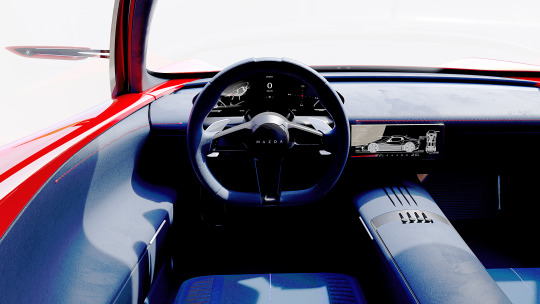

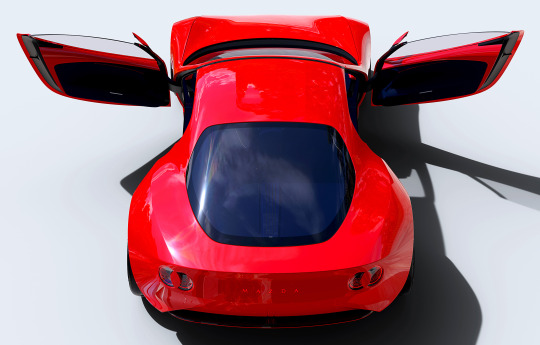
Mazda Iconic SP Concept, 2023. A prototype sports coupé powered by a 2-rotor rotary EV system that can run on hydrogen but also has an all-electric mode. The combined output of the hybrid powertrain is 365hp and it can also be used as a backup power source and supply a family with enough electricity for more than a week. Presented at the Japan Mobility Show, the high output generated by the two-rotor rotary EV system and the weight distribution of around 50:50 are said to "achieve excellent driving performance" but no word of when we might be able to buy one.
#Mazda#Mazda Iconic SP#concept#prototype#design study#sports car#twin rotor#Mazda Rotary#rotary hybrid#EV#electric sports car#Japan Mobility Show#red cars
664 notes
·
View notes
Text
"Agriculture Drones Market Growth & Forecast: Trends, Applications, and Insights Through 2031"

🌾 The Agriculture Drones Market is revolutionizing farming practices with cutting-edge technology! 🚁 Valued at a significant size, this market is expanding with hardware & software offerings, including fixed, rotary, and hybrid wing drones. Key applications like precision agriculture, livestock monitoring, and irrigation are driving rapid growth across regions. 🌍
📈 Explore the Agriculture Drones Market report for insights on growth potential, trends, and competitive landscape till 2031!
📖 Read more: Click Here
#agriculturedrones#precisionagriculture#smartfarming#dronetechnology#agritech#agricultureinnovation#livestockmonitoring#sustainablefarming#agriculturemarket#droneapplications#globalmarket#marketgrowth#futureofagriculture
0 notes
Text
Medical Drone Market Size, Share, Trends Overview & Growth Prospects by 2032
The global medical drone market size was valued at USD 1.25 billion in 2023 and is expected to be worth USD 1.47 billion in 2024. The market is projected to reach USD 4.68 billion by 2032, recording a CAGR of 17.9% during the forecast period.
A medical drone refers to an unmanned system that can transport large quantities of medical items and other essential supplies. The COVID-19 pandemic was instrumental in boosting the demand for these drones to deliver essential supplies and vaccines in remote areas. Countries across the world had set up the required infrastructure and facilities to improve the use of drones. These factors are expected to boost the medical drone market growth.
Fortune Business Insights™ displays this information in a report titled, "Medical Drone Market, 2024-2032."
Informational Source:
LIST OF KEY COMPANIES PROFILED IN THE REPORT
Aquiline Drones (U.S.)
Avy (Netherlands)
Bell Flight – Textron (U.S.)
Draganfly Innovations (Canada)
Drone Delivery Canada Corp. (Canada)
Freefly Systems (U.S.)
Aether Global Innovations Corporation (Formerly, Plymouth Rock Technologies Inc.) (U.S.)
Skyports Ltd. (U.K.)
Vayu Inc. (U.S.)
Workhorse Group (U.S.)
Segments:
Great Vertical Lift Capacity to Boost Adoption of Rotary-Wing Drones
Based on type, the market is categorized into fixed wing, rotary-wing, and hybrid. The rotary-wing segment is set to dominate the market as these drones have a high vertical lift capacity and can easily carry large loads due to the presence of micro turbine equipment.
Remotely Operated Drones to Gain Traction Due to their Robust Applications in Medical Field
By technology, the market is classified into remotely operated, semi-autonomous, and fully autonomous. The remotely operated segment is anticipated to be the largest segment as these systems are being widely used in several medical applications.
Demand for 2-5 kg Drones to Rise with Growing Inclination toward Medium Load Drones
Based on package size, the market is divided into less than 2 kg, 2 – 5 kg, and more than 5 kg. The 2-5 kg segment captured the largest market share in 2022 due to robust demand for medium payload drones.
Rising Demand for Urgent Blood Samples to Boost Product Use in Emergency Blood Logistic Applications
Based on application, the market is bifurcated into emergency blood logistics, medical drug & vaccine, emergency organ logistics, and others. The emergency blood logistics segment held the largest market share in 2022 due to the strong demand for emergency blood during accidents and to supply blood and pathological samples.
With respect to region, the market covers North America, Europe, Asia Pacific, Latin America, and the Middle East & Africa.
Report Coverage:
The report studies the market in depth and highlights key companies, product types, and leading product applications. It also offers important insights into the latest market trends and market competition, and covers key industry developments. Besides the abovementioned factors, the report mentions several other factors that have contributed to the market’s growth in recent years.
Drivers and Restraints:
Rising Use of Drones in First Responder Operations to Support Market Growth
The use of drones has grown tremendously in recent years as they are known to offer vital assistance in search & rescue operations and disaster management. These widespread applications of drones have boosted their demand in the healthcare sector. These systems can transport first aid, essential goods, vital organs, and many other goods to remote areas, thereby improving their adoption for medical purposes.
However, lack of availability of skilled pilots and adequate infrastructure can impede the market’s growth.
Regional Insights:
North America Market to Gain Momentum with Robust Presence of Reputed OEMs
The North America market is set to dominate the global market as the region has a vast presence of leading OEMs and the demand for these drones is rising across the region. In fact, the U.S. was one of the first countries to use advanced drones during the pandemic, which will further enhance the regional market’s growth.
The Asia Pacific region is predicted to record the highest CAGR as the region is noticing a substantial rise in the number of drones being exported to other regions such as Europe and North America.
Competitive Landscape:
Key Companies to Focus on Offering Different Services to Cement Market Position
Leading market players have a vast variety of products and services to offer and are focused on providing the best drones that enable fastest deliveries. Some of the top players in this market include Vayu Inc., Bell Flight – Textron, Zipline Inc., Avy, Aquiline Drones, and UPS, among many others.
Key Industry Development:
October 2023 - Intermountain Healthcare, a healthcare NPO, introduced its drone delivery services in South Jordan. These services were launched in partnership with Zipline Inc., a global medical drone services provider.
0 notes
Text
I forget his name but there was a guy who invented a hybrid car engine that ran on water (relatively small rechargeable battery, or extremely small propane generator needed to provide power for electrolysis, split the water then run the resulting O/2H gas through a belt-powered compressor, before injecting into the combustion chamber. No need for an air intake. works best on rotary-style engines. Achieves 100% combustion with the only exhaust product being water. With the propane generator it turns the co2 emissions of a normal car (in "person breathing out co2 while jogging per car exhaust co2" equivalent units) from "25 people jogged that distance" to "4 people jogged that distance") who "mysteriously went missing" after he announced his work on some forum somewhere.
"Marcille is blaspheming the Almighty Christian God with her evil Black Magic!" there is zero mention of any gods in Dungeon Meshi, everyone who expresses shock at her actions never brings up religion as a reason for why her actions are unethical.
Marcille is a mad scientist committing medical malpractice in a desperate attempt to save her lover. She's grafting dragon meat onto Falin's skeleton which turned her into an unbalanced chimera hybrid with a mouth too small to feed its body. She rapid-heals her friends without anesthetic and later admits healing magic has been used in torture techniques.
Marcille is a mad scientist. She's a gay Dr. Frankenstein. She's like if Gregory House were Italian.
14K notes
·
View notes
Text
VTOL UAV Market: Projected to Hit USD 10.0 Billion by 2032

Vertical Take-off and Landing (VTOL) UAV Market Outlook
The Vertical Take-off and Landing (VTOL) UAV Market is witnessing an unprecedented surge, cementing its role as a critical segment of the global unmanned aerial vehicle (UAV) industry. With a market size valued at USD 1.652 billion in 2023, this sector is projected to skyrocket to USD 10.0 billion by 2032, demonstrating a staggering compound annual growth rate (CAGR) of 21.96% from 2024 to 2032. Driven by an expanding range of applications, favorable government policies, and technological advancements, VTOL UAVs are transforming operations in military, commercial, and consumer markets.
Browse Report – Explore the report’s contents, sections, and key insights by browsing through its detailed information.
Understanding the VTOL UAV Market
VTOL UAVs possess the unique capability to take off, hover, and land vertically, eliminating the need for runways. This versatility makes them ideal for use in diverse environments, from dense urban landscapes to remote and rugged terrains. VTOL UAVs are often categorized into fixed-wing, rotary-wing, and hybrid models, each catering to specific use cases across industries. These systems are increasingly sought after due to their ability to combine the benefits of traditional drones and helicopters, offering improved operational efficiency, precision, and maneuverability.
Key Drivers of Market Growth
The exponential growth of the VTOL UAV market is fueled by several key factors:
Increasing Adoption Across Military and Defense Sectors
Military applications remain the largest driver of VTOL UAV demand. Governments worldwide are investing heavily in UAV technologies for surveillance, reconnaissance, intelligence gathering, and combat operations. VTOL UAVs, with their ability to operate in confined and unpredictable environments, are invaluable for modern warfare strategies. For instance, they can be deployed for border patrols, target tracking, and delivering supplies to troops stationed in inaccessible areas. The growing focus on minimizing human casualties and enhancing operational capabilities further accelerates their adoption.
Expanding Commercial Applications
The commercial sector is witnessing significant VTOL UAV integration across industries such as logistics, agriculture, energy, and infrastructure. E-commerce giants and logistics providers are actively exploring VTOL UAVs for last-mile delivery services, reducing delivery times and costs. In precision agriculture, these UAVs are used for crop monitoring, spraying fertilizers, and assessing field health, improving productivity and efficiency for farmers. Similarly, industries like oil and gas rely on VTOL UAVs for pipeline inspections, minimizing downtime and ensuring worker safety.
Technological Advancements
Rapid advancements in UAV technology, including improved battery life, autonomous flight capabilities, and enhanced payload capacities, have bolstered the growth of VTOL UAVs. Hybrid VTOL models that combine fixed-wing and rotary-wing features offer extended flight ranges and longer operational hours, making them ideal for applications requiring both vertical take-off and long-distance travel. Additionally, innovations in artificial intelligence (AI) and machine learning are enabling smarter, data-driven operations, enhancing UAV performance across applications.
Favorable Government Policies and Regulations
Governments globally are recognizing the potential of UAVs and implementing favorable policies to support their development and deployment. Streamlined licensing procedures, relaxed airspace restrictions, and funding for UAV research and innovation are creating a conducive environment for market growth. In regions like North America and Europe, regulatory bodies are collaborating with UAV manufacturers to establish clear guidelines for commercial UAV operations, further boosting adoption.
Market Segmentation and Regional Insights
The VTOL UAV market can be segmented based on type, application, and region:
By Type: The market includes fixed-wing, rotary-wing, and hybrid VTOL UAVs. Hybrid models are expected to witness the highest growth due to their versatile applications and operational advantages.
By Application: Key application areas include military and defense, logistics, agriculture, energy, construction, and media.
By Region: North America dominates the market, driven by significant defense spending, technological advancements, and strong support for commercial UAV applications. Europe and Asia-Pacific are also emerging as major players, with increasing investments in UAV infrastructure and applications across industries like agriculture and energy.
Challenges and Opportunities
While the VTOL UAV market offers immense potential, challenges such as high development costs, limited battery capacities, and regulatory complexities in certain regions may hinder growth. However, these obstacles also present opportunities for innovation. For instance, advancements in lightweight materials, alternative power sources (e.g., hydrogen fuel cells), and modular designs are expected to address these limitations and propel market expansion.
Future Outlook
The future of the VTOL UAV market looks promising, with continued investments in research and development expected to unlock new capabilities. Emerging trends such as drone swarm technology, urban air mobility (UAM), and autonomous delivery systems are likely to redefine the possibilities of VTOL UAVs. Additionally, partnerships between public and private stakeholders will further drive innovation and create robust ecosystems for UAV deployment.
Conclusion
The Vertical Take-off and Landing (VTOL) UAV market is on a trajectory of remarkable growth, driven by its unparalleled versatility and expanding applications. With a projected value of USD 10.0 billion by 2032 and a CAGR of 21.96%, this market represents a significant opportunity for businesses, governments, and innovators alike. As technology continues to evolve and regulations become more supportive, VTOL UAVs are set to revolutionize operations across military, commercial, and consumer sectors.
The rapid adoption of VTOL UAVs signifies more than just market growth; it reflects a transformative shift toward smarter, safer, and more efficient aerial solutions. Companies and stakeholders investing in this dynamic industry stand to gain a competitive edge in shaping the future of UAV technology.
Request Free Sample Report - Receive a free sample report to preview the valuable insights and data we offer.
About US
Market Research Future (MRFR) is a global market research company that takes pride in its services, offering a complete and accurate analysis about diverse markets and consumers worldwide. Market Research Future has the distinguished objective of providing the optimal quality research and granular research to clients. Our market research studies by products, services, technologies, applications, end users, and market players for global, regional, and country level market segments, enable our clients to see more, know more, and do more, which help answer your most important questions.
Contact US
Market Research Future (part of Wants tats Research and Media Private Limited),
99 Hudson Street,5Th Floor New York 10013, United States of America
Sales: +1 628 258 0071 (US) +44 2035 002 764 (UK)
Email: [email protected]
#Vertical Take-Off And Landing (VTOL) UAV Market Share#Vertical Take-Off And Landing (VTOL) UAV Market Growth
0 notes
Text
Price: [price_with_discount] (as of [price_update_date] - Details) [ad_1] Product Description Hybrid Armor Case : Made from High-Grade Polycarbonate + Polymer; Ring Holder & Kickstand In-Built, Dull Metallic Finish; Proper Camera & Screen Protection, Protective Tough Armor Case; Easy Access to All Features; Excellent Protection for your phone.The invisible four-cornered airbag is designed to absorb shocks and falls and effectively protect your phone. Raised Edges protect your phone screen.Integrated ring holder & Stand allows easy one-hand operation and provides better & confident hold. Can also act as a rotary kickstand for easy movie watching.Precise cutouts- all buttons and interface have a user-friendly design to avoid frequent disassembly. And the case has perfect cutouts for speakers, camera and charging hole allowing you to easily access to all features and convenient for charging your phone without take off the case. Built in kickstand gives you the convenience to watch videos and movies hands-free with desired comfort and stability.Metal kickstand can rotate 360°, easy to rotate and sturdy on the case. Besides, built-in metal magnetic sheet for stable absorption, which can be directly attach to the magnetic car mount holder. (not includes the magnetic car mount holder). Slide Cover for Camera Protection : Screen and Camera Protection - The raised screen and camera edges protect the phone camera and screen from direct friction when placed on a desk. All buttons and ports are finely notched to fit tightly with the phone's volume buttons, side buttons and curves.It protects your Privacy as well, just slide it to close when not in use.Made from High-Grade Polycarbonate + Polymer; Ring Holder & Kickstand In-Built, Dull Metallic Finish;Proper Camera & Screen Protection, Protective Tough Armor Case; Easy Access to All Features; Excellent Protection for your phone.The invisible four-cornered airbag is designed to absorb shocks and falls and effectively protect your phone. Raised Edges protect your phone screen. Hybrid Protection : Combining a hard PC back, a Soft TPU frame and shock-absorbent corners, this hybrid case provides comprehensive protection to all the sides and back of device. Compatible devices : Vivo Y27 Color: Blue Case Type: Back Case Cover Precision-cut Design for Easy Access To All Buttons And Ports and Does Not Obstruct The Camera Lens NOTE -Images Are for Reference Purpose Only, Color Might Slightly Vary. [ad_2]
0 notes